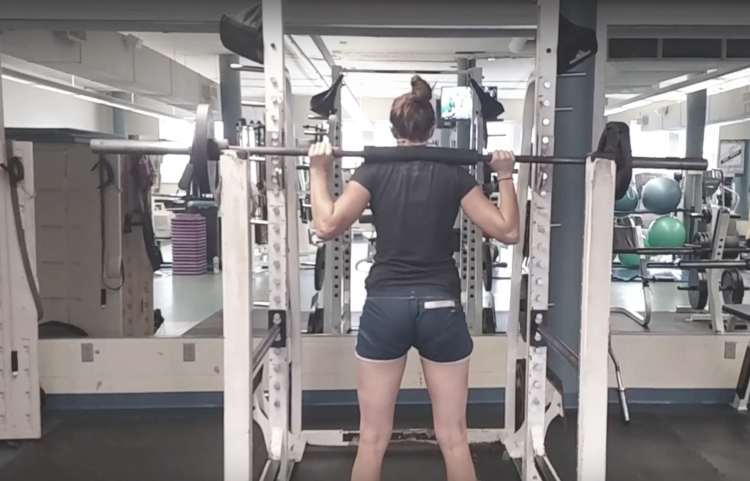How Do You Train for Enduro?
10 Jan 2017
Hi Syd,
Since you just wrapped up a series on skills practice, I would like to see a post about your overall training through the year. Like, what kind of fitness training (both on and/or off the bike) are you doing leading up to your season and what kind of training do you do in between races when you are in the heaviest part of season.
I always look forward to your new posts, and I find them much more interesting than the normal “this is what happened at my race” reports that many riders write.
Thanks,
Lindsay

This question from Lindsay made me realize that I’ve pretty much neglected writing about my training on this blog. This isn’t because I don’t think training is important — obviously, it’s super important — but more because I don’t consider myself a training expert. I have a coach and a strength trainer/PT who write all of my workouts and basically save me from myself on a weekly basis. It’s really, really hard to train yourself, especially if you kinda know nothing about sports physiology. I tried to do it in 2014/15 and it was a total disaster that resulted in jacked up knees and me being sick like seven times in one year due to effectively riding myself into the ground.
I started working with Daniel Matheny (Matheny Endurance) last winter and I cannot express how great it is to have someone writing your training plan — having planned workouts eliminates all those nagging thoughts of “am I doing enough” and “is this even the kind of workout I should be doing” that plagued me before I started working with Daniel. Now, I just put my head down and do it, and it’s great. Also, Daniel’s really good about figuring out when I need more rest, just based on the power/HR numbers he’s seeing, so even if I’m lying and saying I’m fine, he tells me to rest more. While I had plenty of other mishaps this year, I managed to make it through the season without that miserable mid-August cold that caught me out the past few years. Recovery is key!!!
Since 2016 was (apparently) my year for dealing with shit I should have dealt with ages ago, I started working with Dane Delozier from Revo PT and Performance in May, trying to heal up my persistent knee tendinitis. Since then, I’ve been working with Dane to build strength generally and to keep improving my knees (and a few other grouchy body parts). Through this process I’ve discovered some serious areas of foundational weakness and bad movement and have been working to address them. (If you’re interested in how different movements affect mountain bikers, Dane writes a column for MTB Project and it’s worth checking out.)
Training for enduro in the off-season is all about training your weaknesses. For me that means strength work and high power work. I’m naturally an endurance athlete, so I don’t worry about being out on the bike for seven or eight hours a day. While having some base is great, I can always pull a big day out of my ass if I have to. However, before I started training with Daniel, my peak power for anything from 10sec to 5min was pretty poor. I had also really never done any strength work at all before last fall, so while I was “fit,” I wasn’t very strong. And enduro is all about strong.
That said, if you’re interested in training for enduro, I really do recommend working with a coach to tease out your weaknesses — if you come from a power sports background (i.e. DH racing, DH skiing) you might need to work on your base more than I do. Even though enduro racers don’t actually race for seven hours, being out that long is no joke.
This winter, I’ve been spending a lot of time in the gym focusing on big-muscle movements, like squats, deadlifts, etc. and really dialing in my movement to make sure my knees are doing what they should be doing. On the bike, I’ve been doing a mix of short sprints (20 – 40 sec) and longer lactate threshold work to make sure I can punch it for an eight to 12 minute stage. Also, I’ve been riding fun trails, because fun is important too. As it gets closer to the start of the season, the intervals will probably get shorter, and once the season starts my strength work will probably dial down to more of a maintenance level to avoid too much fatigue going into races.
Training for enduro during the race season is tricky because between racing and pre-riding you sometimes end up with very, very high volume weekends. This makes it hard to fit in adequate recovery AND training between races. This is where having a coach is really key, as they are able to give you some perspective on when you should be training and when you should be resting and preparing for the next race. Left to my own devices, I tend to over do it.
Basically, training is all about balance, addressing your weaknesses and consistency. Sometimes you have to get out there and get it done when you don’t want to or the weather is nasty. That’s just life. Having a structured plan (and someone to keep you accountable) is a huge part of this.
Thanks for the question, Lindsay, hope this helps! :)






You mentioned freezing your toes off in your last post… what tips do you have for cold weather. How do you protect your digits when it’s workout stopping cold.
Will let you know when I figure it out. So far I think you’re doing better than me!